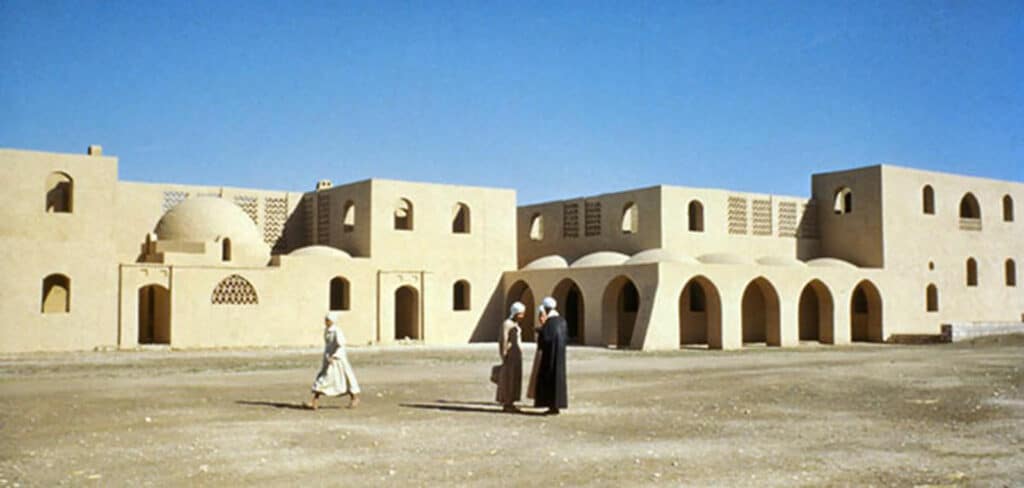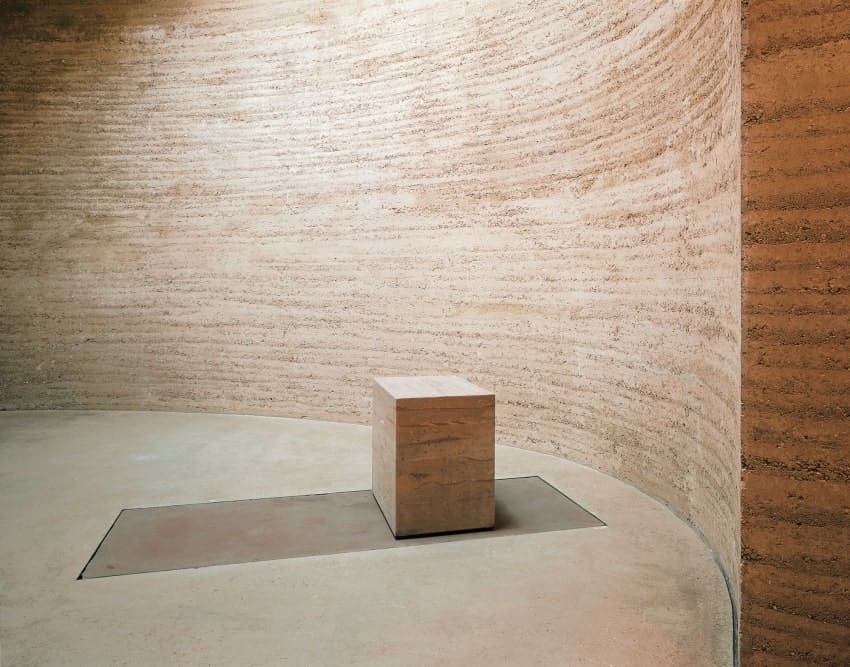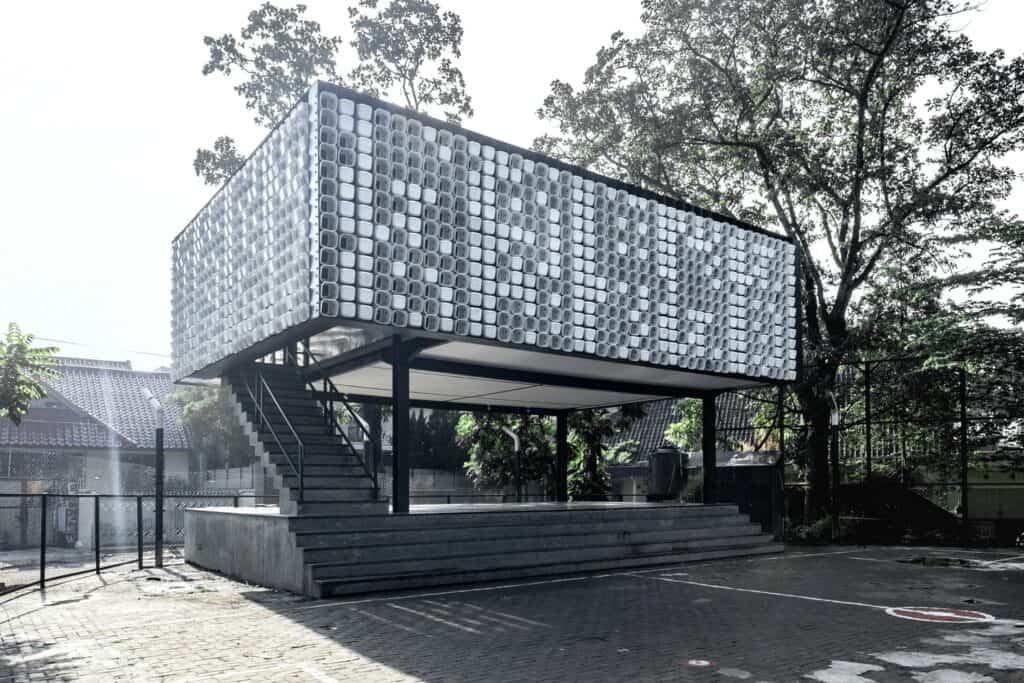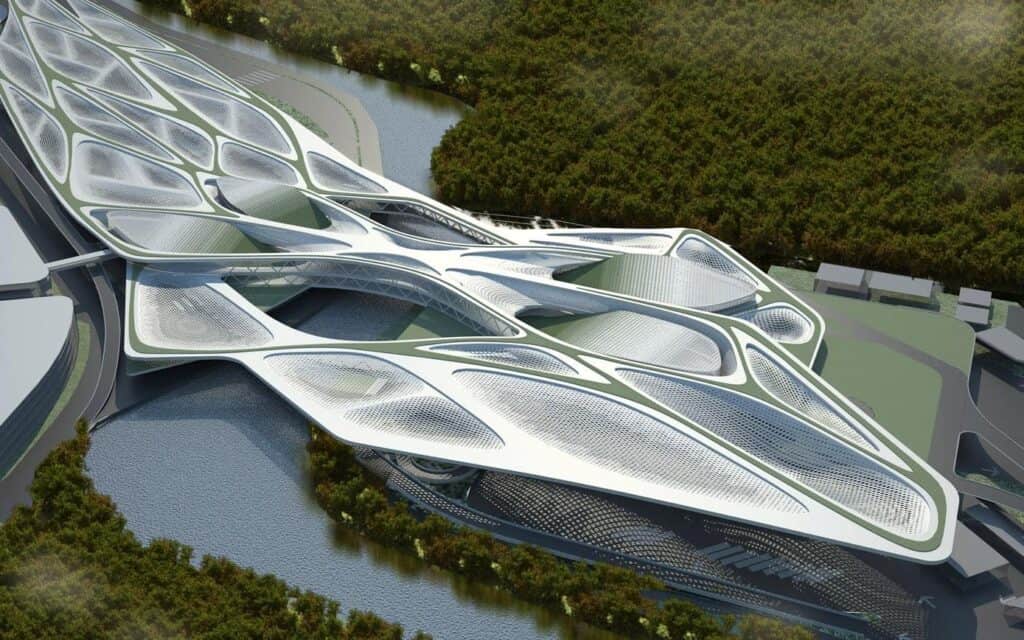Articles & Features
Sustainable Architecture: Between Ancient Materials and New Practices

By Tori Campbell
“Sustainable architecture looks to the future by looking at the past.”
Stephen Gist
Sustainable Architecture
Sustainable architecture is a term vague enough that it can encompass many different building typologies and ideologies. In general, sustainable architecture refers to buildings that have been designed to limit the human impact on the environment. Some cultures have been designing their local homes sustainably for centuries, while others are more recently responding to this need with new urgency. From the implementation of technical innovations like solar panels and rainwater storage systems that bring renewable energy to the site to the use of recycled or organic building materials, sustainable architecture takes many forms depending on where, and when, you investigate it.

Mud Architecture
One of the most ancient, and sustainable, building materials is mud. Numerous cultures throughout human history have utilised mud and mud bricks to build their homes and towns. The mud brick, baked in the hot sun instead of fired in a kiln, exemplifies a low-energy approach that has seen resurgences in popularity several times; in several different countries throughout the last couple of decades.

In the 1940s the great Egyptian architect Hassan Fathy designed New Gourna, a village rebuilt entirely in mud and employing the ancient technique of the Nubian vault — creating a self-supporting roof by laying courses of bricks at an angle against a gable wall. In the 1980s award-winning Indian architect Revathi Kamath brought mud architecture into the luxury market, creating high-end homes and buildings using the ancient material. Mud architecture can now be seen around the world; from sun-baked mud bricks to rammed-earth techniques; homes, institutional buildings, and places of worship display this sustainable architecture.
Recycled Materials
One of the ways that architects have envisioned sustainable architecture is through the use of recycled building materials. This concept has been realised in myriad ways throughout the years. Some architects choose to simply reuse old materials like tiles and beams; supported by numerous initiatives to share discarded building materials to create a circular economy and reduce waste.

Other architects are starting from scratch, choosing to re-envision an entirely new use for materials that were never intended to be used in construction. Some inventive materials that have been used in the past include the Bima Microlibrary’s recycled plastic ice cream containers, the Luxury Pavilion’s recycled bedsprings, and the Gallery of Furniture’s recycled plastic seats; though there are thousands of other examples from around the world.

Tech & Design Innovations
Instead of, or sometimes in addition to, the use of earth or recycled building materials; architects can employ new technical or design interventions to create more sustainable architecture. Innovative solutions are constantly being iterated upon — from solar panels that can account for a building’s energy use and storage, to. These innovations vary widely based on funding, location, and surrounding environmental conditions: for example, heating pumps that use far less power than traditional systems might be popular in northern countries, while hotter climates might aim to minimise natural light in their building designs, in order to reduce air conditioning needs.

Some architects are looking to nature, and embracing biomimicry in order to design more environmentally sustainable solutions. For example, the Eastgate Centre in Harare, Zimbabwe was inspired by the design of termite mounds, as they are always at a constant temperature. This innovation allows the shopping mall to use no energy on heating or cooling. Additionally, architects are increasingly attempting to literally make their buildings more ‘green’ by implementing rooftop gardens, lush plant-heavy terraces, or even living facades with an exoskeleton of crawling ivy and leafy greens. These urban gardens can help with the cooling of buildings, increase biodiversity in the surrounding environment, and also happen to look very beautiful!

What’s Next?
Though the future of sustainable architecture is unknown, we can assume that architects will continue to get bolder and more experimental with their creations. Right now, some architecture firms are taking the use of discarded and recycled materials one step further to create an entire structure out of a single discarded material — such as the movement to use recycled shipping containers for student housing in places like Amsterdam and Copenhagen.
While using earth as a medium, incorporating recycled materials, or employing technological innovations to create sustainable architecture can be aesthetically appealing and make for good stories; it is important to remember that these solutions are not ‘one size fits all’ and buildings must be thoughtfully designed with the local ecological, social, and cultural surroundings in mind to be truly sustainable.

Relevant sources to learn more
Read about the architect shaping Africa’s future: Diébédo Francis Kéré
Ecofriend has examples of futuristic sustainable architecture
Sustainability in the Art World: Fighting the Environmental Crisis
Neri Oxman: Designing For A Nature-Centric Future